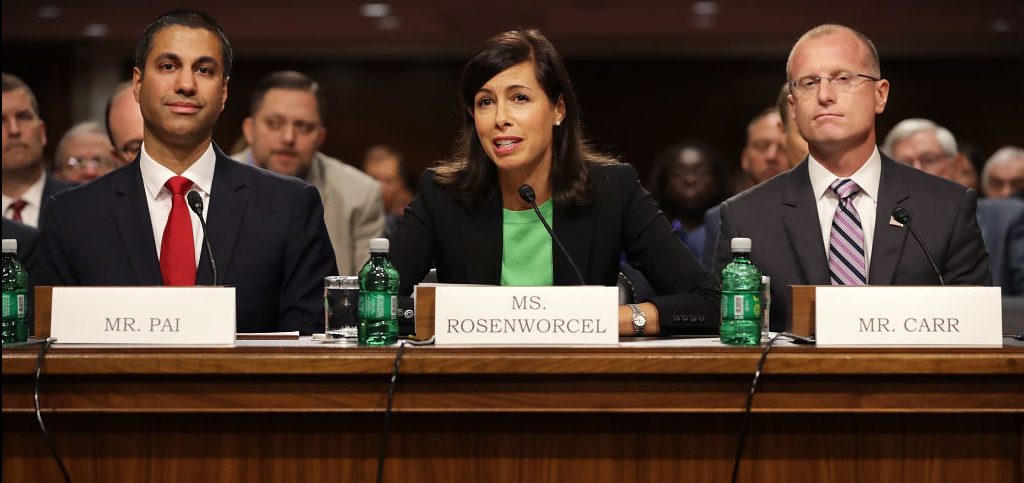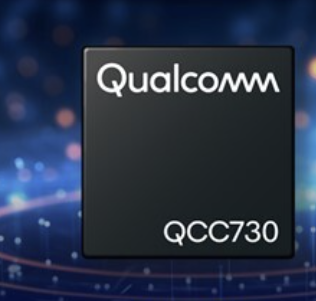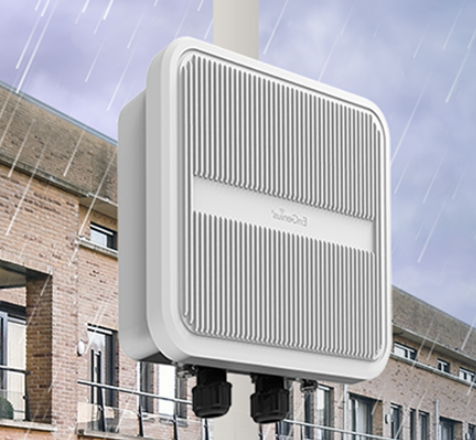
By Claus Hetting, Wi-Fi NOW CEO & Chairman
Yesterday the FCC Commissioners and Chairman voted unanimously in favour of releasing up to 1.2 GHz more Wi-Fi (unlicensed) spectrum in and around the 6 GHz band. The vote constitutes another giant leap towards making this large swath of spectrum available for Wi-Fi use already by next year.
It is somewhat ironic: The hard and persistent push by US telco giants and vendors towards making new spectrum available for 5G has indirectly landed the Wi-Fi industry a gigantic and unprecedented win. In a historic meeting in Washington D.C. yesterday, the US regulator voted unanimously in favour of making the 6 GHz band available for unlicensed use.
This means that the amount frequencies available for Wi-Fi to operate in could more than double – possibly already by the end of next year. This staggering amount of new spectrum will likely spark a massive new growth cycle for the Wi-Fi industry and allow consumers and businesses to apply low-cost Wi-Fi technology to multitudes of new use cases.
Wi-Fi 6 plus 6 GHz: The perfect storm?
As another stroke of good fortune – or perhaps some would say meticulous planning – the release of the 6 GHz band would likely coincide nicely with wide commercial availability of devices and routers operating according to the new Wi-Fi standard previously known as 802.11ax and recently renamed by the Wi-Fi Alliance as Wi-Fi 6 (to reflect that this is the sixth generation of Wi-Fi).
Wi-Fi 6 has already been designed to meet a steep rise in the number of personal devices as well as connected machines and ‘things’. Add 1.2 GHz of possible new spectrum and Wi-Fi 6 could perhaps triple or quadruple the connectivity capabilities of Wi-Fi systems in the foreseeable future.
Next steps and possible new rules for 6 GHz Wi-Fi
The next steps in the process towards freeing up 6 GHz is for the FCC to release a so-called ‘Notice of Proposed Rule Making’ or NPRM document. A draft NPRM document for unlicensed 6 GHz was released on October 2 and can be found here. The FCC will then invite the public to comment.
In the current draft version of the document the FCC suggests that a large part of the 6 GHz spectrum should be managed by applying an ‘Automatic Frequency Control’ (AFC) system that would protect point-to-point radio and satellite incumbent users of the band from interference. The rest of the 6 GHz spectrum “would be restricted to indoor use and would operate at lower power, without an AFC system,” the FCC says in the draft NPRM.
Chairman points to need for ‘5G offload’
Chairman Pai’s comments on the decision refer to the need for more Wi-Fi spectrum so that cellular operators can offload more traffic to Wi-Fi and away from their own prospective new 5G networks. In somewhat of a bizarre plot twist, more offloading to Wi-Fi – presumably for free – in this way becomes at least in part a perceived prerequisite for the future success of mobile 5G networks.
“It is also part of our aggressive and balanced spectrum strategy: Pushing more licensed and unlicensed spectrum into the commercial marketplace and including a mix of low-band, mid-band, and high-band spectrum. And with the massive amount of wireless traffic that is off-loaded to Wi-Fi, opening up this wide swath of spectrum for unlicensed use could be a big boost to our nation’s 5G future,” Pai said in this written statement.
He also said that he is optimistic about the prospects of freeing up the 6 GHz bands quickly. “We should be able to get the job done before the next Batman movie is released,” he said.
The drive towards the 5.9 GHz band is still very much alive
Meanwhile, the 6 GHz decision may have prepared the ground for even more Wi-Fi spectrum being made available, this time in the 5.9 GHz band. FCC Commissioner Jessica Rosenworcel recently pushed for a reopening of the case for 5.9 GHz Wi-Fi and reiterated the importance of 5.9 GHz in her statement on the 6 GHz decision: “We need a fresh look at Wi-Fi opportunities in the 5.9 GHz band. This is overdue,” Commissioner Rosenworcel said in her written statement.
Commissioner Michael O’Rielly also voiced his fervent support of 5.9 GHz in his comments on the 6 GHz decision: “Now, if we could only open up the 5.9 GHz Band for unlicensed use as well, for which I believe there are four solid votes in favour, we would really be on to something special, as it’s the missing link between the 5 GHz and 6 GHz bands,” O’Rielly said.
And both FCC Commissioners are spot on, of course. The 5.9 GHz band is critically important not so much because of its size but because it would allow Wi-Fi to operate with wider contiguous channels spanning the gap between current 5 GHz and new 6 GHz frequency bands.
/Claus.
Notes: We have received comments on this post from qualified and knowledgable sources pointing out that the regulatory process set in motion by the vote last week may eventually result in less than the full amount of proposed 6 GHz spectrum being made available for unlicensed use. We acknowledge that the FCC’s vote last week is procedural and not the final ruling. However, given the statements made by the Chairman and Commissioners, the political intent to make this happen is obviously substantial and unanimous. We therefore believe we are justified in in presenting the story in this way.









